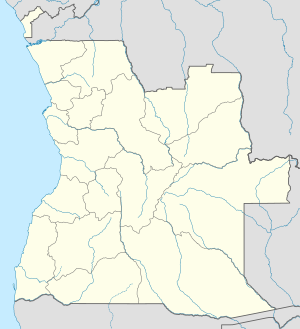Lubango
| Lubango | |
|---|---|
| Municipality and city | |

Panoramic view
|
|
| Location in Angola | |
| Coordinates: 14°55′S 13°30′E / 14.917°S 13.500°E | |
| Country |
|
| Province | Huíla |
| Elevation | 1,720 m (5,640 ft) |
| Population (2010) | |
| • Total | 256,713 |
| Time zone | WAT (UTC+1) |
| Climate | Cwb |
Lubango is the capital city of the Angolan province of Huíla. Its last known population was 100,757. Until 1975, the city's official name was Sá da Bandeira.
In 1882 approximately one thousand of Portuguese settlers came from the island of Madeira to the area of current-day Lubango, Angola. These Portuguese farmers successfully developed the whole region and founded the settlement. The city, originally established in 1885 to serve colonists from the Madeira Islands, lies at an elevation of 1,760 metres in a valley of the Huíla Plateau and was surrounded by a scenic park spreading up the mountain slopes.
In 1885, about 40 Boer families from the north-west of South Africa settled at Grootfontein. Part of the Dorslandtrekker, they were heading towards the area currently known as Lubango, in Angola, which was claimed by Portugal. When that territory officially fell under Portuguese control due to the Conference of Berlin, they turned back and tried to establish the "Republic of Upingtonia" at Grootfontein.
By 1910 there were over 1,700 ethnic Portuguese living in the settlement that was referred to as "Lubango". By 1923 the Moçâmedes Railway had connected the settlement to the town of Moçâmedes in the coast. The Portuguese government made it a city and renamed it "Sá da Bandeira", after Bernardo de Sá, 1st Marquess of Sá da Bandeira. Once the major centre of Portuguese settlement in the hinterland of southern Angola, it was built in a Portuguese style of architecture, with a cathedral, commerce hall, industrial hall, and a secondary school, and, like every Portuguese city or town in the mainland and the overseas territories, it would have the Portuguese town hall, the hospital and the typical CTT post office, besides banking (most prominently the Banco Nacional Ultramarino - BNU), insurance and other services as well. The city developed as a notable agricultural and transportation centre, with its own airport and railway station, as well as major maintenance and repair facilities for them.
...
Wikipedia

